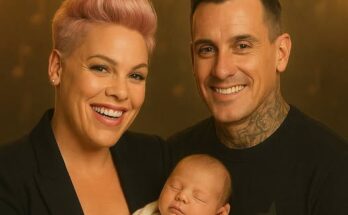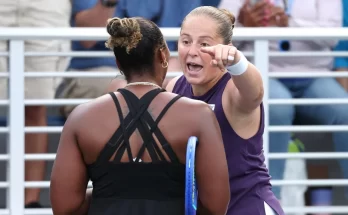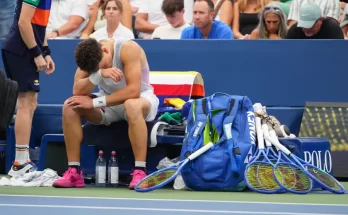Why the Orioles Are Doubling Down on Fixing a Farm System That’s Running Thin
For years, the Baltimore Orioles have prided themselves on building through their farm system. It was the bedrock of their recent turnaround, a pipeline that produced names like Adley Rutschman and Gunnar Henderson, fueling a resurgence that took the franchise from the bottom of the standings to playoff contention. But success in baseball is a moving target, and in today’s game, staying ahead often means admitting when a strength is starting to erode. That’s the reality Baltimore faces now: a farm system once ranked among the best in baseball is no longer as deep or as intimidating as it used to be, and the organization knows it.
The Orioles’ rise wasn’t an accident. Years of calculated moves, top draft picks, and player development excellence created a talent reservoir that other clubs envied. The strategy was clear—stockpile young talent, let it develop, and then reap the rewards when those prospects blossom into stars at the big-league level. For a while, that plan worked to perfection. It carried Baltimore out of the dark days of constant rebuilding and back into relevance. But as those prized prospects graduated to the majors and the organization leaned on them to power its resurgence, the pipeline started to thin.
Evaluators across the league have noted the shift. While the Orioles still boast a handful of intriguing names in the minors, the overall depth and top-end talent are not what they were just a few years ago. The system that once seemed overflowing now looks like a pool that’s slowly draining, and in an era where depth often decides October matchups, that’s a concern the front office can’t ignore. The challenge isn’t just about adding bodies—it’s about adding impact. In a division as unforgiving as the AL East, mediocrity in player development is a death sentence.
General Manager Mike Elias understands this better than anyone. The architect of Baltimore’s rebuild knows that the same principles that lifted the Orioles from irrelevance must now be recalibrated to sustain their success. That means doubling down on scouting, analytics, and development, but it also means recognizing that the margin for error has shrunk dramatically. A farm system that was once a luxury is now a necessity for long-term survival. Injuries happen, free agents leave, and not every top prospect turns into a cornerstone. Without a steady flow of reinforcements, even the most talented roster can stagnate.
Adding urgency to the situation is the state of the Orioles’ competition. The Yankees and Red Sox are always looming with deep pockets and aggressive strategies, while the Rays continue to unearth hidden gems through a development machine that defies logic. For Baltimore, keeping pace requires more than riding the momentum of past success—it demands continuous reinvention. That’s why the Orioles’ front office is making it a priority to address the farm system now, before the cracks become fissures.
The process won’t be easy, and it won’t happen overnight. Restocking a farm system requires a multi-pronged approach: strong drafts, smart trades, and, increasingly, international signings that bring in dynamic talent from around the globe. The Orioles have shown a willingness to explore all three avenues, but execution will determine whether they can turn a looming weakness back into a strength. It’s a delicate balance—Baltimore wants to compete now while also safeguarding its future. That means finding ways to upgrade the minors without sacrificing the major-league roster that has brought the fan base back to life.
Some fans may wonder why there’s such an emphasis on the farm system when the Orioles are finally winning at the big-league level. The answer is simple: sustainability. Baseball’s landscape is littered with teams that climbed the mountain only to tumble back down because their pipeline ran dry. Prospects aren’t just about the future—they’re the currency that allows teams to make aggressive moves in the present. Want to acquire an ace at the trade deadline? That takes prospects. Want to weather the storm of injuries without imploding? That takes organizational depth. For a team like Baltimore, which can’t outspend its rivals, the farm system is the lifeline that keeps everything afloat.
Elias and his staff have already taken steps to address the issue. Recent drafts have been heavy on upside, with a focus on athletes who can develop into versatile contributors. International efforts are ramping up after years of underinvestment, and the Orioles have signaled a willingness to trade from the big-league roster if it means acquiring controllable young talent. None of these moves guarantee success, but they underscore a clear recognition that the status quo won’t cut it. Baltimore can’t afford complacency—not with the window to contend open and the stakes as high as they’ve been in a decade.
There’s also a cultural element to consider. Building and maintaining a strong farm system isn’t just about talent acquisition; it’s about player development. The Orioles have invested heavily in infrastructure—technology, coaching, nutrition, mental skills programs—because they know that raw ability means nothing without the right environment to nurture it. That commitment has to continue and even intensify if Baltimore wants to reclaim its spot among the elite systems in baseball.
The story of the Orioles’ farm system is still being written, and it’s far from a doom-and-gloom scenario. There’s talent in the pipeline, players who could become the next wave of stars in Baltimore. But the safety net that once felt so secure is thinner now, and the organization isn’t blind to that reality. The question isn’t whether the Orioles will act—it’s how aggressively they’ll move to address the gap. Will they swing bold trades? Will they dominate the draft? Will they make a splash internationally? Those answers will shape not just the farm system, but the franchise’s trajectory for years to come.
For fans, this might feel like a strange moment—celebrating the return to contention while also worrying about the future. But in baseball, those two realities are inseparable. The Orioles’ rise was fueled by foresight and patience. Sustaining that rise will require the same qualities, amplified by the urgency of competing in a division where standing still means falling behind. The farm system is the foundation, and right now, that foundation needs reinforcement. Baltimore knows it. The question is how fast they can make it happen—and whether they can do it without slowing the momentum of a team that has finally given its city something to believe in again.



